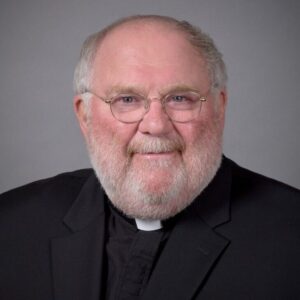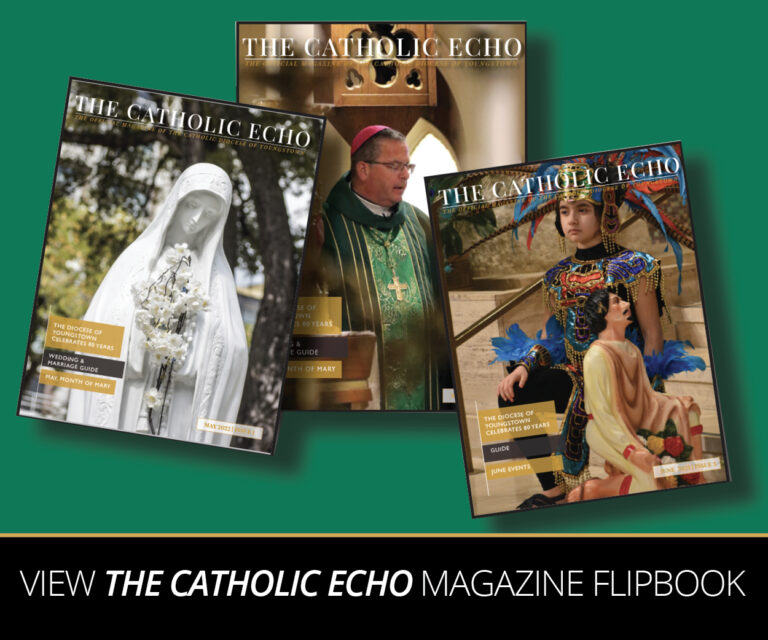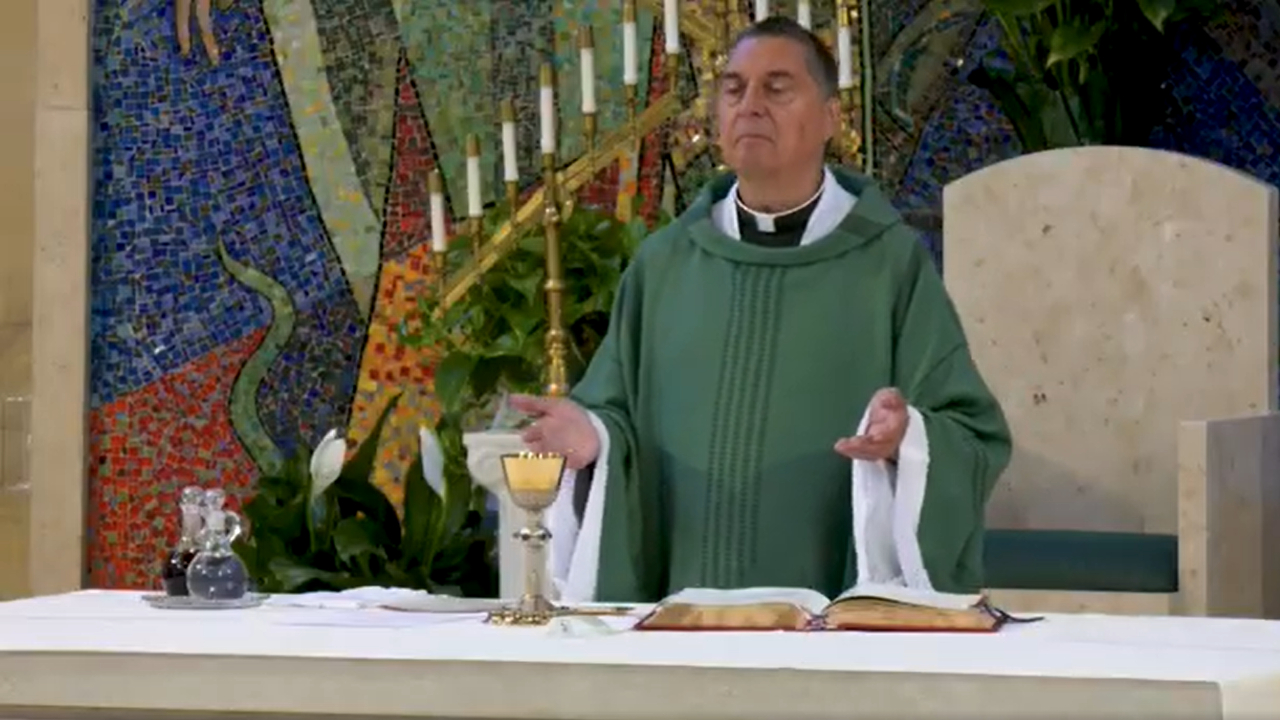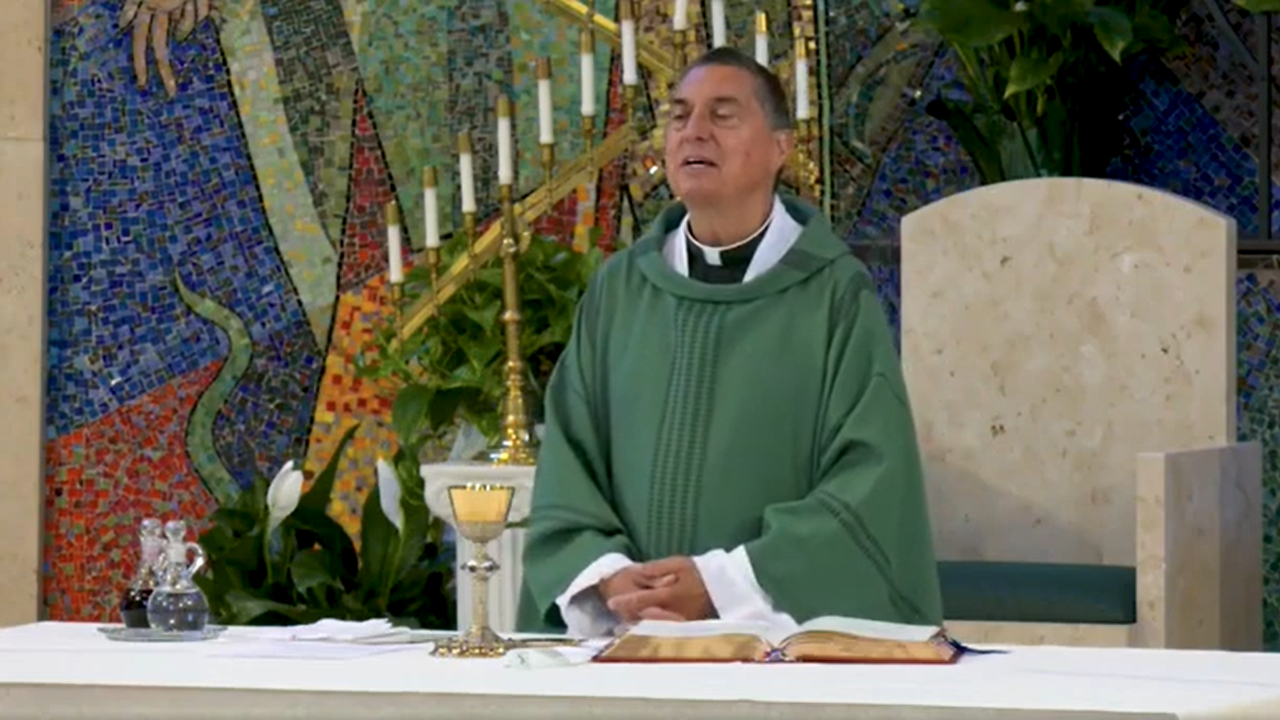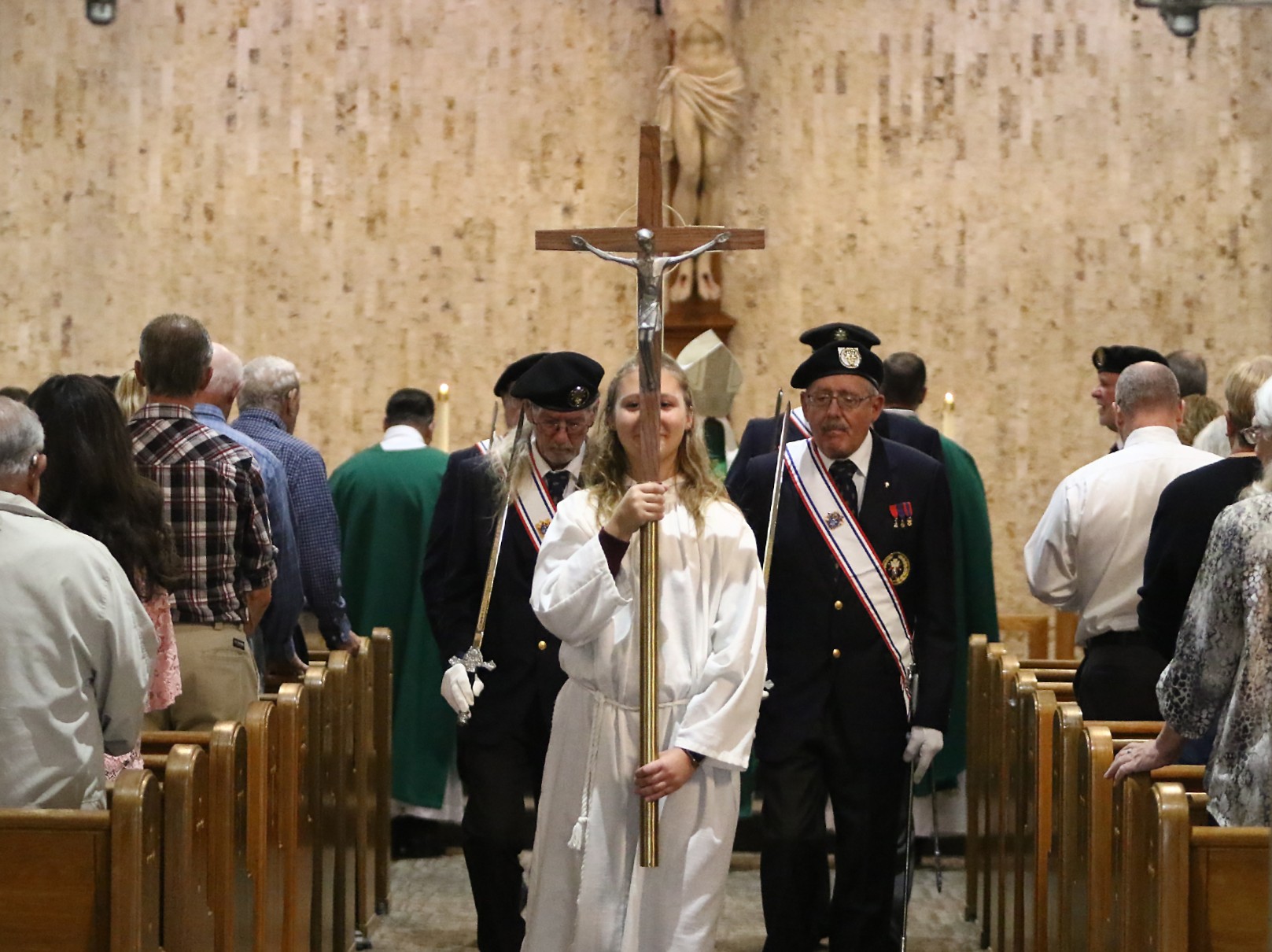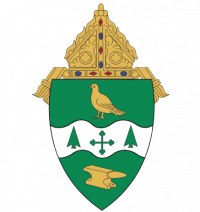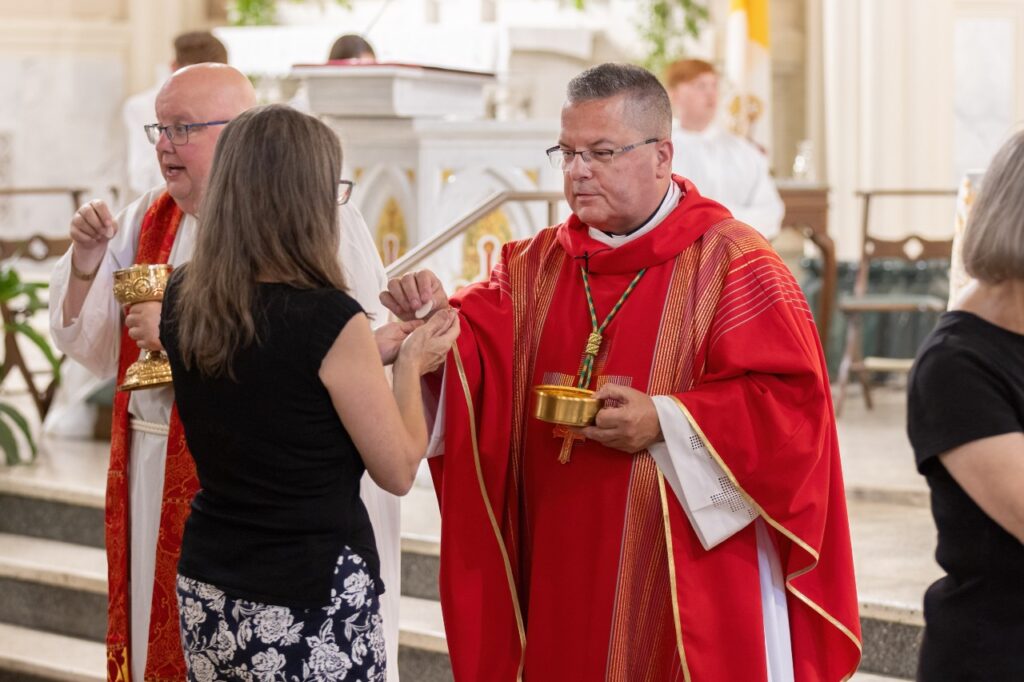
“May this mingling of the Body and Blood of our Lord Jesus Christ bring eternal life to us who receive it.” These are the words the priest prays at Mass as he breaks off a small piece of the Sacred Host and places it into the chalice with the Precious Blood (sometimes making the sign of the cross over the chalice). This important gesture, unfortunately lost on many in the congregation who are unable to see it, has a long and important history.
To comprehend this gesture, one must go back to the very primitive, post-apostolic Church. A few short decades after Jesus’ life, early Christian communities were small because of the fierce persecutions they endured, and it was unclear who presided over the Eucharist. The offices of “bishop” (in Greek Episcopus, meaning “overseer”) and “priest” (Greek presbyteros, meaning “elder”) were undifferentiated.
Later, in the first century (ca. 100 A.D.), the role of the Bishop emerged as a prominent, concrete, visible sign of the unity of believers.
As the number of Christians grew, the office of the Bishop presided at the Sacrament of the Eucharist. As early as the year 202 A.D., there is evidence of the Bishop reserving some of the Eucharist at his Masses to be shared with the other parishes under his pastoral leadership. In the third century, Pope Innocent embraced the practice of sending part of the Sacred Host from his altar to the other parishes in the diocese of Rome. This became a sign of the unity of the various churches under the Bishop’s care, as he could not be present physically. The local priests then—just before Holy Communion—would place a particle of the consecrated host from the altar of the Bishop into their chalices as a spiritual sign of unity with their Bishop and with one another.
The Church grew exponentially after Christian persecutions ended with Constantine’s Edict of Milan (313A.D.), so this practice could not continue. But as a vestige and a reminder of this spiritual unity, the Bishop and the priests continued to place a part of the host into their chalices.
Another reason for this action is because it symbolizes the union of Jesus’ Body and Blood. Since the Body of Christ cannot be divided—if one receives only the host or only the chalice—one receives the full Body and Blood of Jesus in each species.
Another interpretation of “commingling,” which helped the practice endure, is the coming together of the two species as a sign of fullness, and thus of the resurrection of Jesus. The words, “May the commingling and consecration of the Body and Blood of our Lord Jesus Christ bring eternal life to us who received it,” are found in the Ordo Romanus I and continued to be used through the Missals of 1474 and 1570.
These words were then changed so as not to confuse the “commingling” with the “consecration,” and the prayer was rewritten as we have it now—but the basic meaning, and purpose endured through the ages. Indeed, as we approach the Lord at the altar, may we pray along with the priest: “May this mingling of the Body and Blood of our Lord Jesus Christ bring eternal life to us who receive it.”
This question was submitted to the diocesan Facebook page by Bonnie Case.

